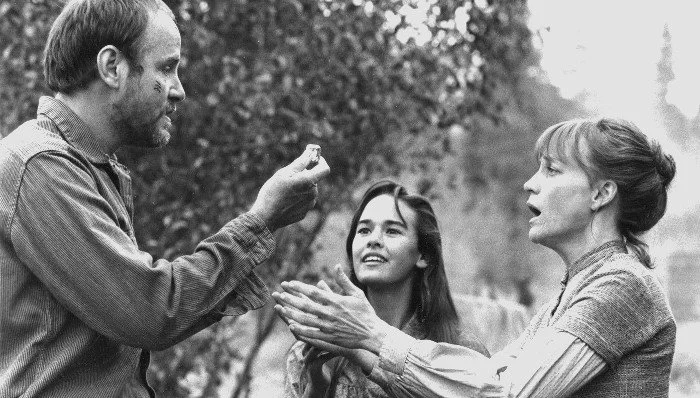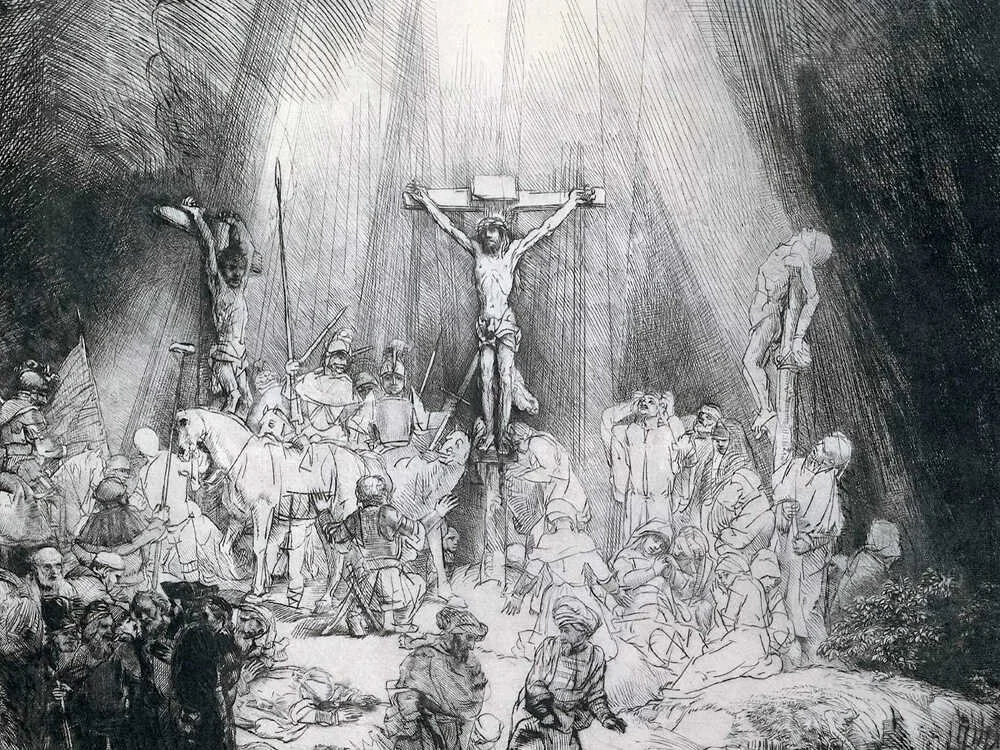Do Not Hold on to Me | A Sermon for Easter Sunday
A Sermon by the Reverend Mother Crystal J. Hardin on Easter Sunday, April 9, 2023.
John 20:1-18
Alleluia! Christ is risen.
The Lord is risen indeed. Alleluia!
From the earliest days of the Christian witness, this proclamation was and is our truest, boldest claim: that Jesus, the Christ, having died on a cross for love of us was raised from the dead by God, the Father; and that through Jesus’ death and resurrection, we can experience, in the words of one great hymn, a “love so deep, so high, so broad” –a love marked by mercy and meant to set us free.
What brought you to church on this blessed Easter morning? Was it the promise of resurrection joy? Was it your spouse? Was it a need for change, a new beginning? Was it family tradition? Was it the love of your parish family? Was it my preaching? Was it your parent? Was it questions or was it answers?
No matter how you found yourself here this morning, welcome. Welcome to the first day of the rest of your life. God is making all things new.
Believe it or not. It’s all true.
If, by chance, you’re not sure of that fact -if you find yourself doubting what Christians profess on Easter or wondering whether it even matters at all -well, that’s fine too. You are not alone.
Much of what we profess in here is not readily apparent out there. This too is true. And, although what we profess at Easter, and carry with us throughout the year, is relatively straightforward –Christ has died. Christ is risen. Christ will come again –it also happens to be the greatest mystery of Christian faith. It’s meant to cause us a bit of confusion. It’s meant to be wrestled with. After all, it turned the world upside down, or, rather, right side up.
They have taken the Lord out of the tomb, and we do not know where they have laid him (John 20:2).
You can practically see it on the faces of the disciples on that first Easter morning; hear it in their voices. Confusion. Fear. Skepticism. Hope. Joy. Belief. The first experience of resurrection is not one of confidence but of confusion.
So, take heart. Wherever you are in your faith journey, the resurrection truth will meet you there.
And, here’s some good news, it remains true regardless of how we approach it. Whether we woke up this morning joyful, healthy or hopeful; sick, fearful or weary. Whether we woke up in the Easter frame of mind or unable to shake the dust of Lent from our feet, the resurrection truth has been, is, and will always remain the same:
Alleluia! Christ is risen! Thanks be to God.
Brother Keith Nelson of the Society of St. John the Evangelist remarks that “each of us has undergone, and will yet undergo, countless passions, deaths and resurrections - in churches, yes, but also in hospitals, office buildings, by bedsides and firesides, under the open sky and around kitchen tables. This is the paschal mystery writ small, in lowercase letters, across the individual history of every child of God.”
In other words, the resurrection didn’t just happen to Jesus; it also happens to each one of us.
In the words of the Bishop of the Diocese of Washington, the Right Reverend Mariann Budde:
As we’re able to interpret our experiences of moving through death to life through the lens of Christian witness about Jesus and his resurrection, it feels real to us and for us in ways that give us confidence to place our trust in him. And when that confidence is shaken, we keep on the path, trusting that what matters isn’t the strength of our faith, but the power of God revealed in Jesus.
Let me say that last bit again for those in the back:
“Trusting that what matters isn’t the strength of our faith, but the power of God revealed in Jesus.”
And what is trusting anyway, but letting go?
Jesus said to her, “Do not hold on to me” (John 20:17).
Mary finally recognized Jesus for who he is –her friend and Lord, not dead as she expected, but very much alive –Mary’s instinct is to reach for him and to hold him as tightly as she can. It’s what any of us would have done. It’s what we all do.
But then Jesus said to her, “Do not hold on to me.”
There’s a little Greek word that appears again and again in Scripture. Luo (loo -o). It means “to loose.” [1]
When Lazarus comes out of the tomb, Jesus says, Unbind him and let him go. Here, loo-o, to loose, is to unbind.
In his letter to the Ephesians, Saint Paul writes of Jesus, He has broken down the dividing wall of hostility (2:14). To loose is to break down barriers.
In the book of Revelation, Jesus is described as Him who loves us and freed us from our sins by his blood (1:5). And Peter proclaims that God raised Jesus up, having freed him from death (Acts 2:24). To loose is to set free.
All these instances share something in common –each speaks to resurrection. Lazarus to perfect healing. Ephesians to reconciliation amid hostility. Revelation to the forgiveness of our sins. Peter to Jesus being raised from the tomb.
And Jesus said to her, “Do not hold on to me.” There’s that word – loo-o. Set me loose. Because if resurrection requires anything from us, it requires letting go.
An unclenching of the fist. A softening of the heart. The dissolution of prejudice and of pride. The offer of forgiveness and accepting the same. Allowing what is old to pass away so that what is new may take root.
Because Jesus has loosed us –from the weight of sin and from the finality of death. From the loneliness of exile and the shame of estrangement. Jesus, the Christ, has set us loose, made us free.
This is the Easter truth. And in response we too must learn to set loose - to let go. To let go of our judgments and our shames. Our resentments and fears. To let go of our defenses and to accept the forgiveness on offer to us in Christ. To let go of who we were so that we can become who we were meant to be.
In the words of my people, we are called to “Let go and to let God!” To admit our powerlessness and to trust instead on God’s provision.
I’d like to share a story. One that I have shared before, years ago now, so you may have heard it. An oldie, but a goodie.
During WWII, in addition to the Jewish people, other groups were persecuted by the Nazis including the Roma.
The story is told of a Roma family who was part of a traveling circus in Poland. During one of their acts, the teenage daughter would jump from a high wire with no net below and her father would catch her.
One morning the father had gone out early and the young girl was alone in the apartment building where they were staying. A stranger came to the door and said that he had a message from her father. The message was that the Nazis had come into town, and they had to escape. It was too dangerous for the father to return by daylight, but that at 2:00 in the morning he would stand at the northwest corner of the apartment building. His daughter should jump, and he would be there to catch her so that they could escape.
The young girl was confused, afraid, skeptical. She didn’t recognize the messenger. She wasn’t sure these were the words of her father. She wasn’t even sure which was the northwest corner of the building.
Alone and afraid, she waited as the day grew long. And her father, well, he didn’t return. She also received word that the Nazis had indeed come into the town. Having only the word of her father’s promise and fearing certain death should she be discovered, she went to what she thought was the northwest corner of the building at the time she had been told and whispered into the darkness: “Father, are you there?”
There was no answer.
After a moment, she leapt –jumping into the unknown.
And he caught her [2].
Yes, Jesus came to set us free. But wait, there’s more, he does not then step away, leaving us to our devices. No. His is a perfect freedom, held within the very heart of God. When we finally take the leap–putting whatever comes next out of our own hands -we find that we are not suddenly in freefall and facing certain death, as we had feared, but that, instead, we are caught within the sweet embrace of the grace of God.
Alleluia. Christ is Risen.
Amen.
[1] Samuel Wells, “Letting Go,” a sermon preached on Easter Sunday at Duke University, https://chapel-archives.oit.duke.edu/documents/sermons/April4LettingGo.pdf.
[2] This story is included in Mary Catherine Hilkert’s Naming Grace: Preaching and the Sacramental Imagination (New York: Continuum, 1997), 89.



